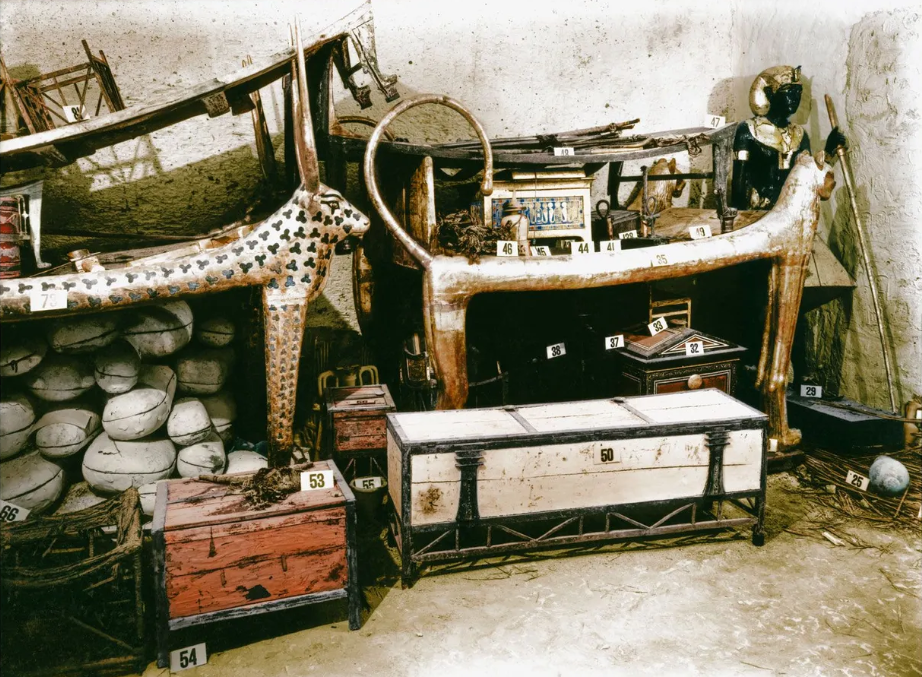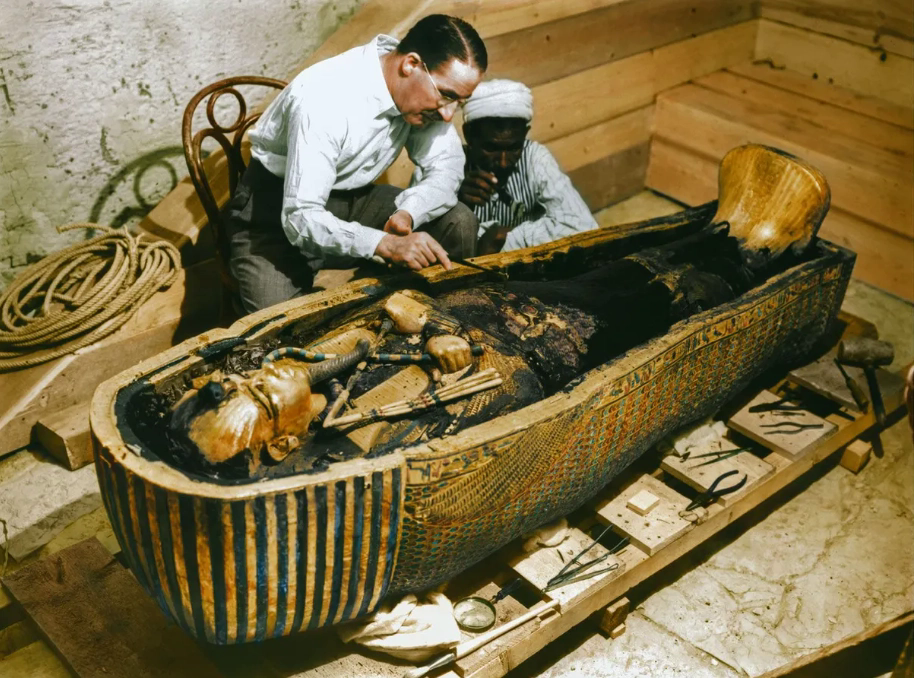The Tomb Of King Tut (Pharaoh Tutankhamun), The Young King Of The Pharaohs, Was Discovered In 1922.

In the annals of archaeological history, the year 1922 marked a momentous occasion—the unearthing of the tomb of Pharaoh Tutankhamun, a discovery that would captivate the world and unravel the mysteries surrounding one of ancient Egypt’s youngest and most enigmatic rulers.
The tale begins with British archaeologist Howard Carter and his financier, Lord Carnarvon, embarking on a quest to uncover the secrets hidden within the Valley of the Kings in Luxor, Egypt. Patient and persistent, Carter’s team had been excavating for years when, on November 4, 1922, the long-awaited breakthrough occurred.

As the archaeologists unearthed the steps leading to the sealed entrance, anticipation mingled with trepidation. The world held its breath as Carter carefully opened the door to Tutankhamun’s burial chamber, revealing a sight that would forever alter our understanding of ancient Egyptian history. The tomb, virtually untouched for over 3,000 years, held a treasure trove of artifacts and the mummified remains of the young pharaoh.

The contents of Tutankhamun’s tomb were a marvel, a testament to the opulence and artistry of ancient Egypt. The golden funeral mask of the young king, with its serene expression and intricate detailing, became an iconic symbol of the discovery. The burial chamber contained a wealth of artifacts, from elaborate jewelry and chariots to alabaster jars and ceremonial furniture, offering a glimpse into the afterlife beliefs and royal customs of the time.
The significance of the discovery extended beyond the material wealth found within the tomb. Tutankhamun, a relatively obscure figure in Egyptian history, suddenly took center stage. The young pharaoh, who ascended to the throne at the tender age of nine, became a global sensation as his legacy unfolded through the meticulously preserved artifacts.

Tutankhamun’s reign, though brief, held a pivotal place in the context of the 18th dynasty. The circumstances of his death, long shrouded in mystery, gained renewed attention as modern forensic techniques sought to unravel the enigma surrounding the demise of the young king. The discovery opened a window into the political and religious dynamics of ancient Egypt during a tumultuous period.
The worldwide fascination with Tutankhamun’s tomb extended beyond the realm of academia. The “Curse of the Pharaohs,” a mythological belief that those who disturbed the resting place of ancient Egyptian royalty would face misfortune, added an aura of mystique to the discovery. Although rooted in superstition, the idea of a curse fueled public imagination and further heightened interest in the archaeological find.
As the artifacts from Tutankhamun’s tomb toured the world, captivating audiences and scholars alike, the young pharaoh’s legacy became immortalized. The discovery not only enriched our knowledge of ancient Egypt but also sparked a renewed passion for archaeology and a global appreciation for the preservation of cultural heritage.

The discovery of Pharaoh Tutankhamun’s tomb in 1922 stands as a watershed moment in the history of archaeology. Howard Carter’s meticulous excavation unearthed a treasure trove that transcended the material realm, offering a glimpse into the life, death, and legacy of one of ancient Egypt’s most intriguing rulers, forever enshrining the name of Tutankhamun in the annals of human history.